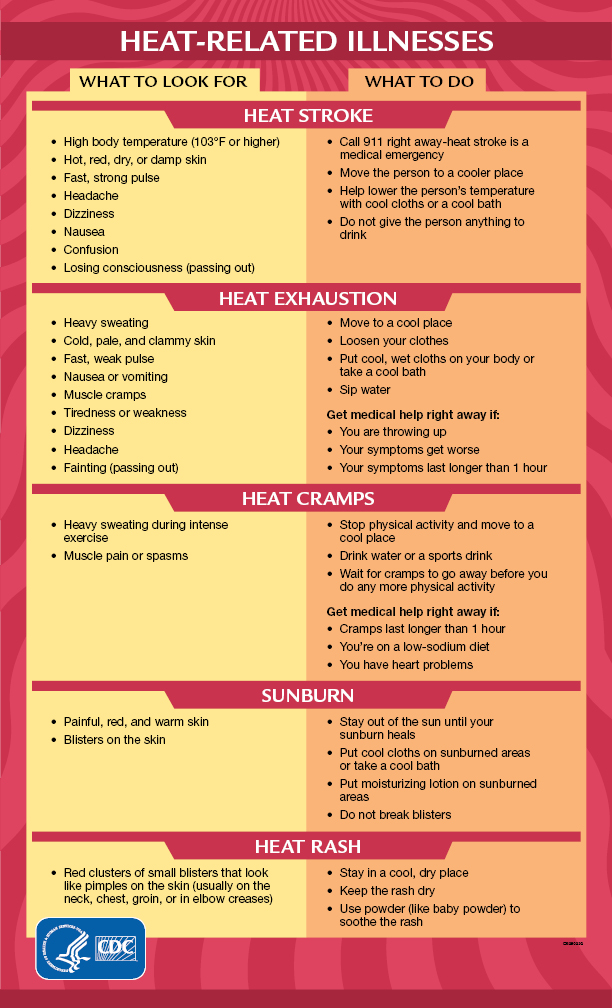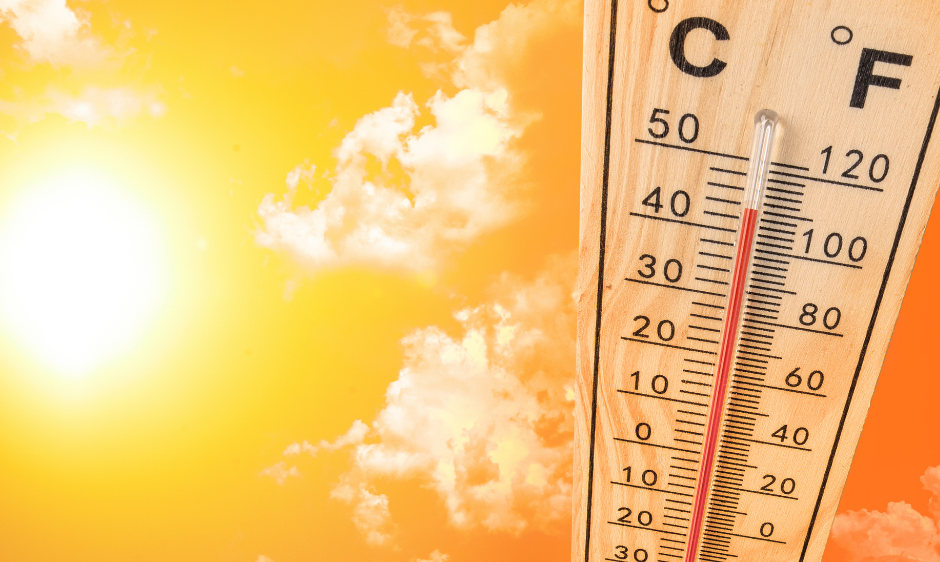A real-life experience, by Myron McCord
We all love the end of a long winter, but spring typically flies by, and you’re into summer… and the heat. Soaring temperatures and heat indexes in the triple digits can turn deadly within minutes when you are not prepared. The best thing you can do to prevent life-threatening situations is to have the knowledge and training to look out for signs and symptoms of heat-related illnesses, and then, be able to take action. When someone becomes overheated every second counts. Knowledge acquired through appropriate training can and will save a life. I speak from personal experience with heat-related illness that changed my life and the course of my future.
It was the summer of 1995; I just started a job with an insulation company. To my younger self, the temperature didn’t feel unbearably hot. But on this day, mid-afternoon, I started to feel a little dizzy and like I was going to faint. I had been sweating a great deal earlier in the day, but that had stopped. I felt lightheaded and nauseous. I had no idea of what was happening, but I knew that I had to get to a cool place to rest and gather myself. I made my way slowly down from the 12-foot ladder I was on and over to my water bottle and a cooler of ice. I decided to lay down on a pack of insulation that was close by, I had taken off my shirt and wrapped it around some ice to use it to cool down areas of my body. I wasn’t aware of the danger I was in but knew something terrifying was happening to my body. I slowly sipped water and tried to cool down. I passed out and awoke 2 hours later, luckily. I made my way back to the shop and told the boss what happened.
The company I worked for at that time had not provided any type of safety training. They did not have a safety coordinator (I didn’t even know what a safety coordinator did), but I vowed to the bosses that I would attain the knowledge needed to prevent that terrifying experience from happening to anyone else in the company. The next day I was offered a new position within the company as safety coordinator, tasked with keeping everyone at the company safe and providing the information and training that was needed. Fortunately, my employers were committed to doing better and provided the resources and support I needed.
This terrifying event changed my life forever. As a safety professional, I know that employers want their employees to be safe and go home to their families every single day. Providing the appropriate safety training is key to achieving this. I was fortunate to survive a dangerous situation without proper training, will you or your workers be as lucky?
If you are interested in more information for your employees about preventing heat exhaustion while at work or any other safety topic. TSS is here to help. Contact us at info@tss-safety.com if you are interested in offering your employees a webinar on preventing heat exhaustion in the workplace or other safety resources.
What to Look For and What to Do
Between 1992 and 2017, heat stress injuries killed 815 U.S. workers and seriously injured more than 70,000, according to the Occupational Safety and Health Administration. Overall, more than 65,000 people visit the emergency room for heat-related stress each year and about 600 die from heat, according to the Centers for Disease Control and Prevention.
This CDC infographic describes the signs that you may be in trouble and what to do.


